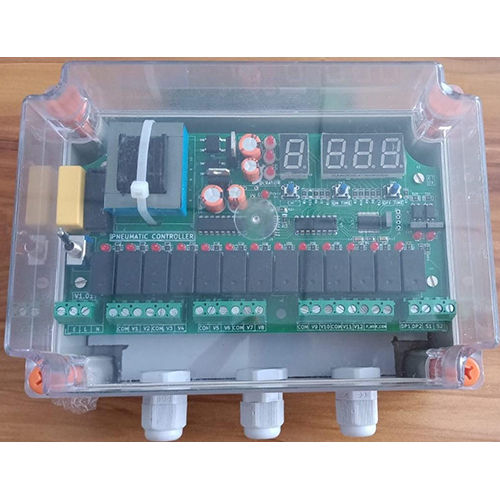डिà¤à¤¿à¤à¤² सà¥à¤à¥à¤µà¥à¤à¤¸ à¤à¤¾à¤à¤®à¤°
Price 10000 आईएनआर/ Unit
MOQ : 10 Units
डिà¤à¤¿à¤à¤² सà¥à¤à¥à¤µà¥à¤à¤¸ à¤à¤¾à¤à¤®à¤° Specification
- टाइप करें
- मैकेनिकल टाइमर
- मटेरियल
- मेटल
- रंग
- स्लेटी
- उपयोग
- औद्योगिक
डिà¤à¤¿à¤à¤² सà¥à¤à¥à¤µà¥à¤à¤¸ à¤à¤¾à¤à¤®à¤° Trade Information
- Minimum Order Quantity
- 10 Units
- भुगतान की शर्तें
- कैश इन एडवांस (CID)
- आपूर्ति की क्षमता
- 1000 प्रति महीने
- डिलीवरी का समय
- 10 दिन
- मुख्य निर्यात बाजार
- मुख्य घरेलू बाज़ार
- ऑल इंडिया
About डिà¤à¤¿à¤à¤² सà¥à¤à¥à¤µà¥à¤à¤¸ à¤à¤¾à¤à¤®à¤°
A Digital Sequence Timer is an electronic device used to control a sequence of events or operations in a specific order and timing. Here's a concise overview:
Key Features- Purpose: Automates processes by triggering outputs in a predefined sequence.
- Operation: Uses digital logic to execute a series of steps, often with adjustable timing and inputs.
- Applications: Industrial automation, machinery control, testing equipment, and more.
Common Specifications- Inputs: Digital signals (e.g., start, stop, reset) or sensor inputs.
- Outputs: Relay, transistor, or optocoupler outputs to control devices.
- Sequence Control: Programmable steps, timing, and logic.
- Display: LED/LCD for status and programming.
- Power Supply: Typically 24V DC or 220V AC.
Types1. Fixed Sequence Timer: Predefined sequence, often with fixed timing.
2. Programmable Timer: User-configurable sequence and timing.
3. PLC-Based: Integrated with programmable logic controllers for complex automation.
Advantages- Automation: Reduces manual intervention and errors.
- Flexibility: Programmable for different sequences.
- Reliability: Digital control ensures consistent timing.
Considerations- Programming: May require knowledge of specific programming languages (e.g., ladder logic).
- Environment: Industrial-grade timers are designed for harsh conditions.

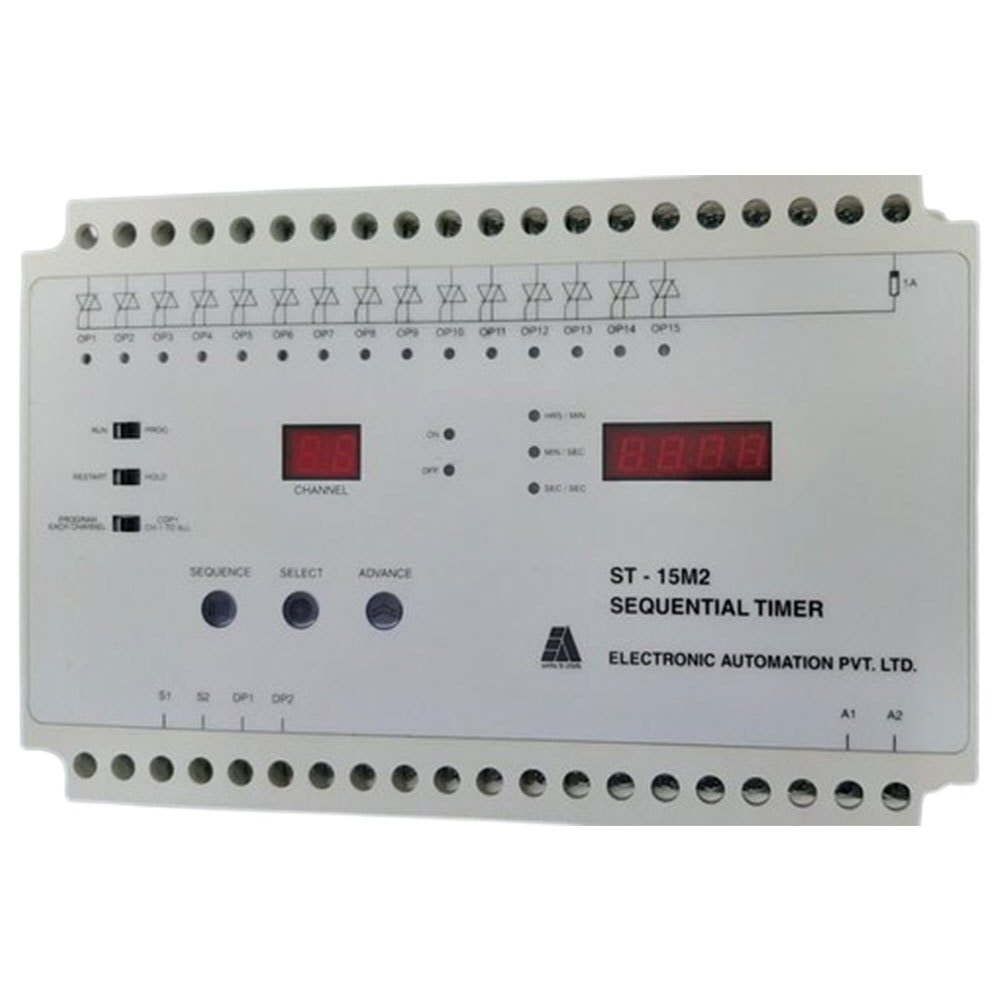
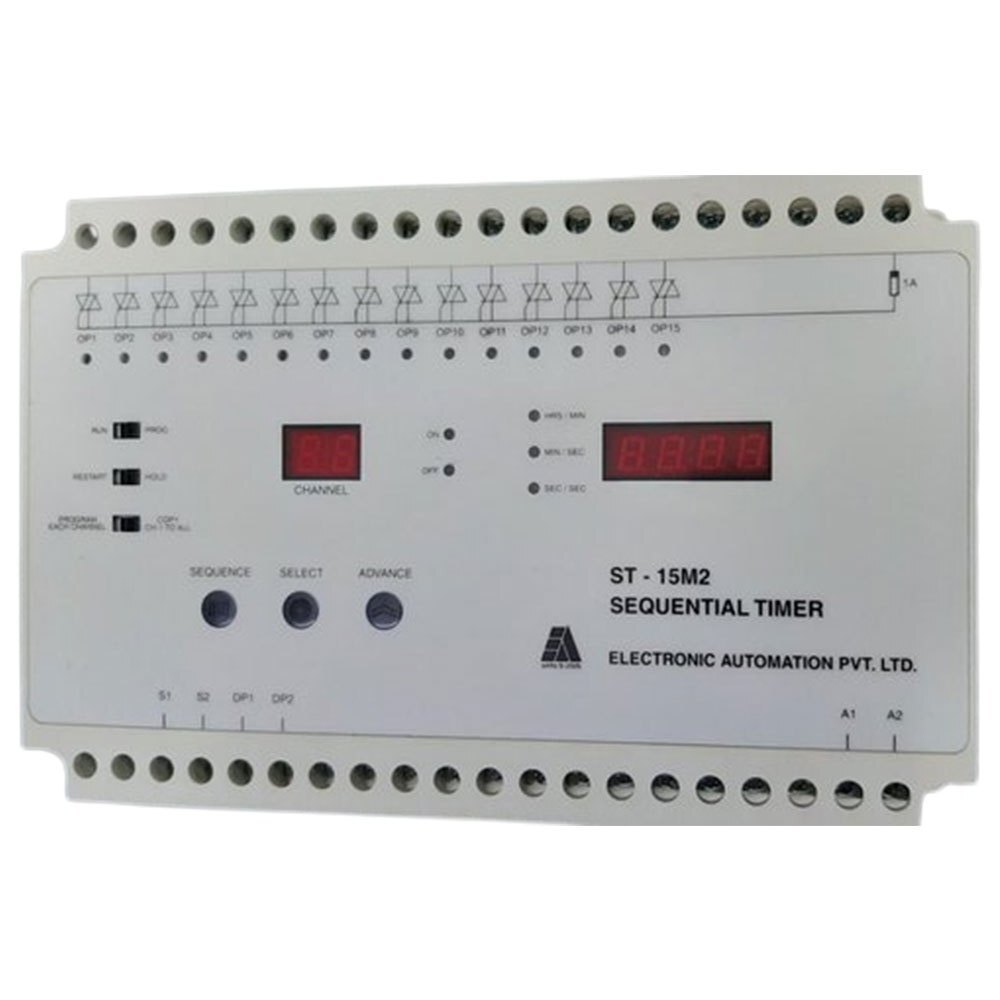
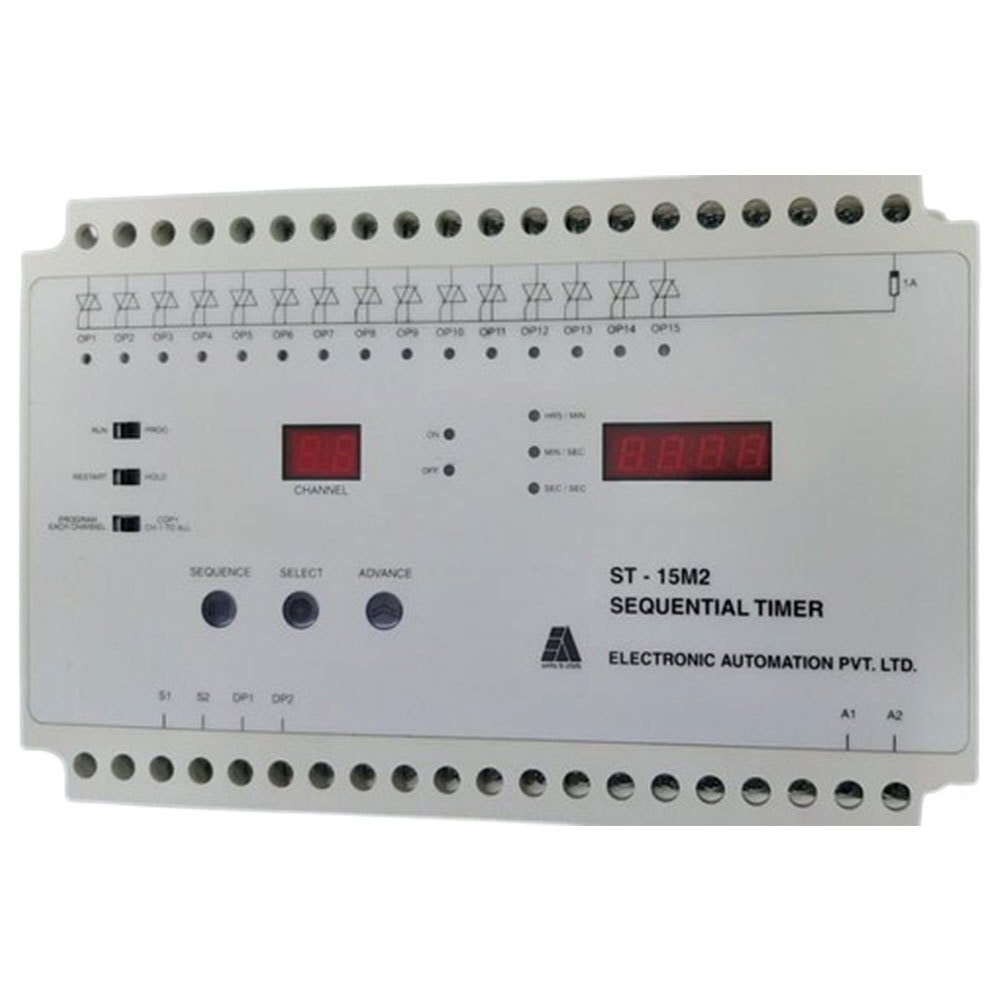

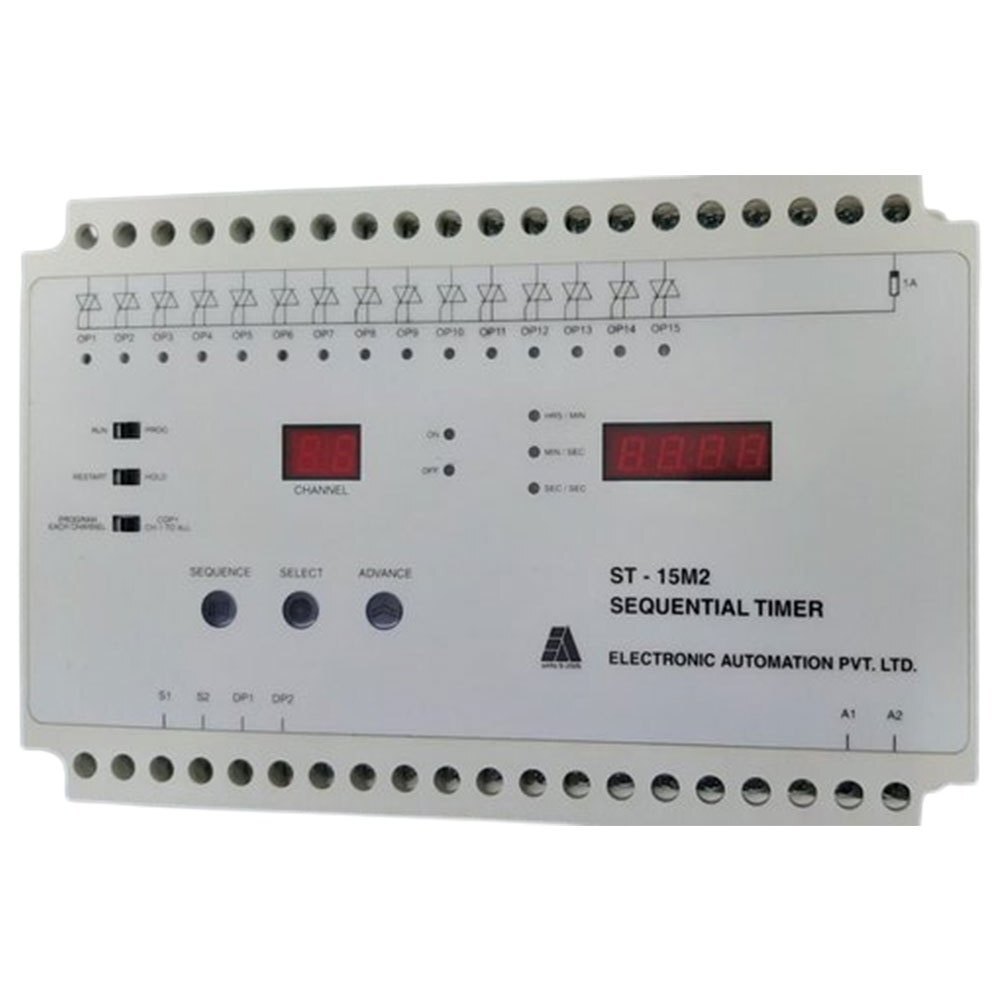
Tell us about your requirement

Price: Â
Quantity
Select Unit
- 50
- 100
- 200
- 250
- 500
- 1000+
Additional detail
मोबाइल number
Email
अधिक Products in डिजिटल अनुक्रम टाइमर Category
PCE-10CH -24V डीसी डिजिटल सीक्वेंस टाइमर
टाइप करें : मैकेनिकल टाइमर
थ्योरी : इलेक्ट्रोनिक
माप की इकाई : यूनिट/यूनिट
मूल्य की इकाई : यूनिट/यूनिट
उपयोग : औद्योगिक
मटेरियल : मेटल
PCE-12CH डिजिटल सीक्वेंस टाइमर
टाइप करें : मैकेनिकल टाइमर
थ्योरी : इलेक्ट्रोनिक
माप की इकाई : यूनिट/यूनिट
मूल्य की इकाई : यूनिट/यूनिट
उपयोग : औद्योगिक
मटेरियल : मेटल
PCE- 24CH डिजिटल सीक्वेंस टाइमर
टाइप करें : मैकेनिकल टाइमर
थ्योरी : इलेक्ट्रोनिक
माप की इकाई : यूनिट/यूनिट
मूल्य की इकाई : यूनिट/यूनिट
उपयोग : औद्योगिक
मटेरियल : मेटल
प्रदूषण नियंत्रण उद्यम
GST : 06BHCPA5127L1ZL
GST : 06BHCPA5127L1ZL
प्लाट न. 1890, जीवन नगर, गौंछी, नियर सेक्. 55, बल्लभगढ़,फरीदाबाद - 121004, हरयाणा, भारत
फ़ोन :08045800910
 |
POLLUTION CONTROL ENTERPRISES
सर्वाधिकार सुरक्षित.(उपयोग की शर्तें) इन्फोकॉम नेटवर्क प्राइवेट लिमिटेड . द्वारा विकसित एवं प्रबंधित |



 जांच भेजें
जांच भेजें

